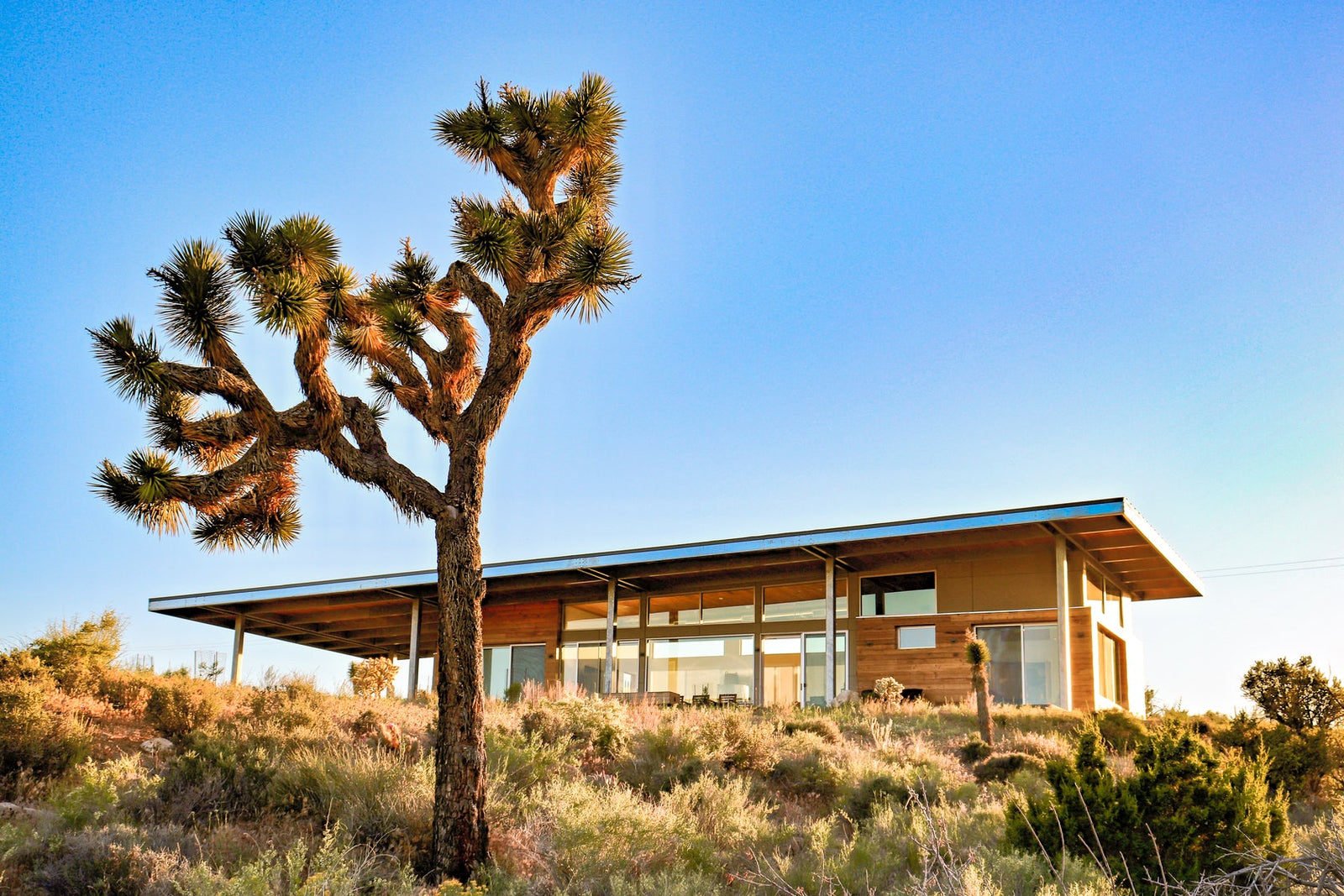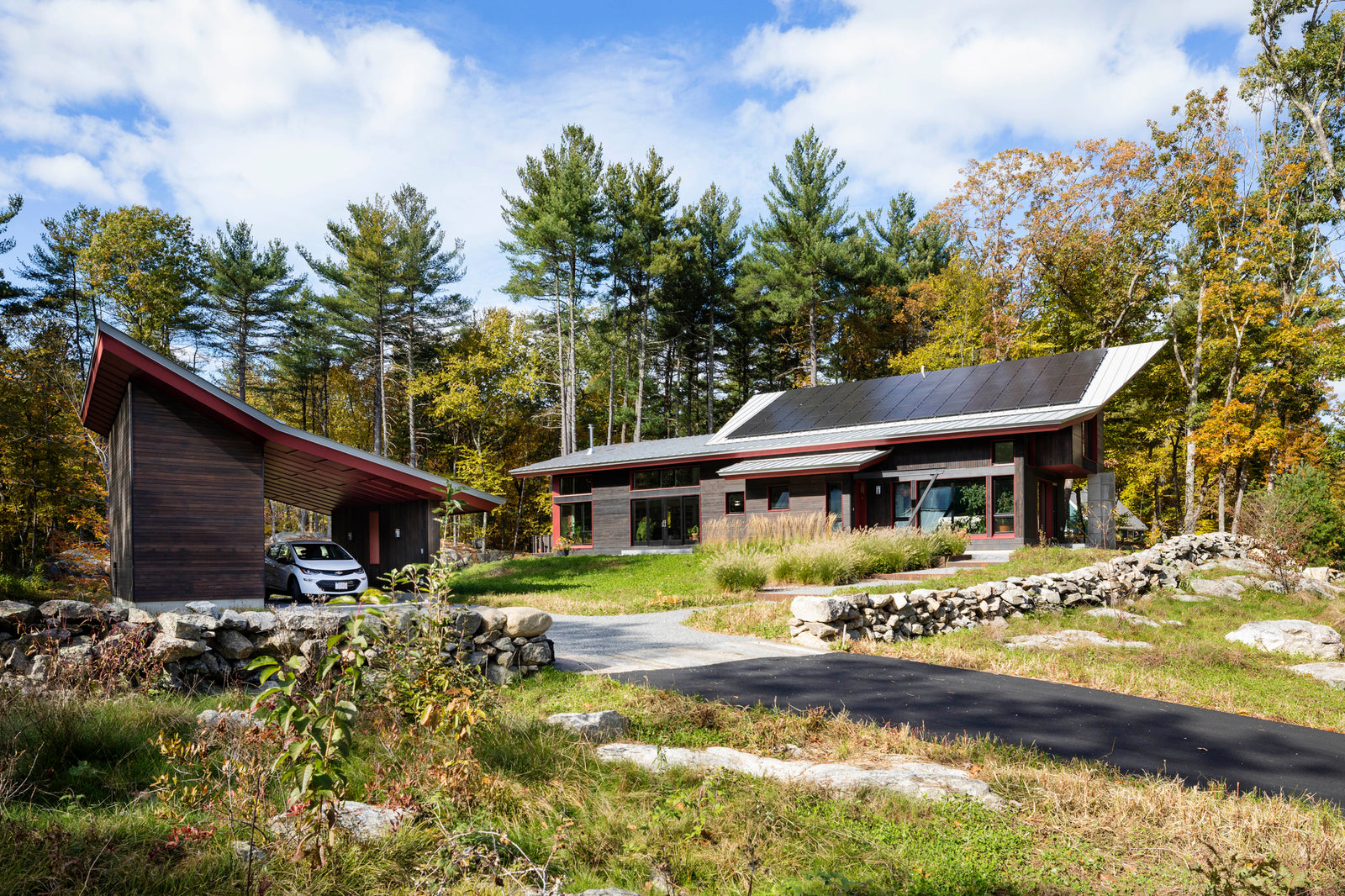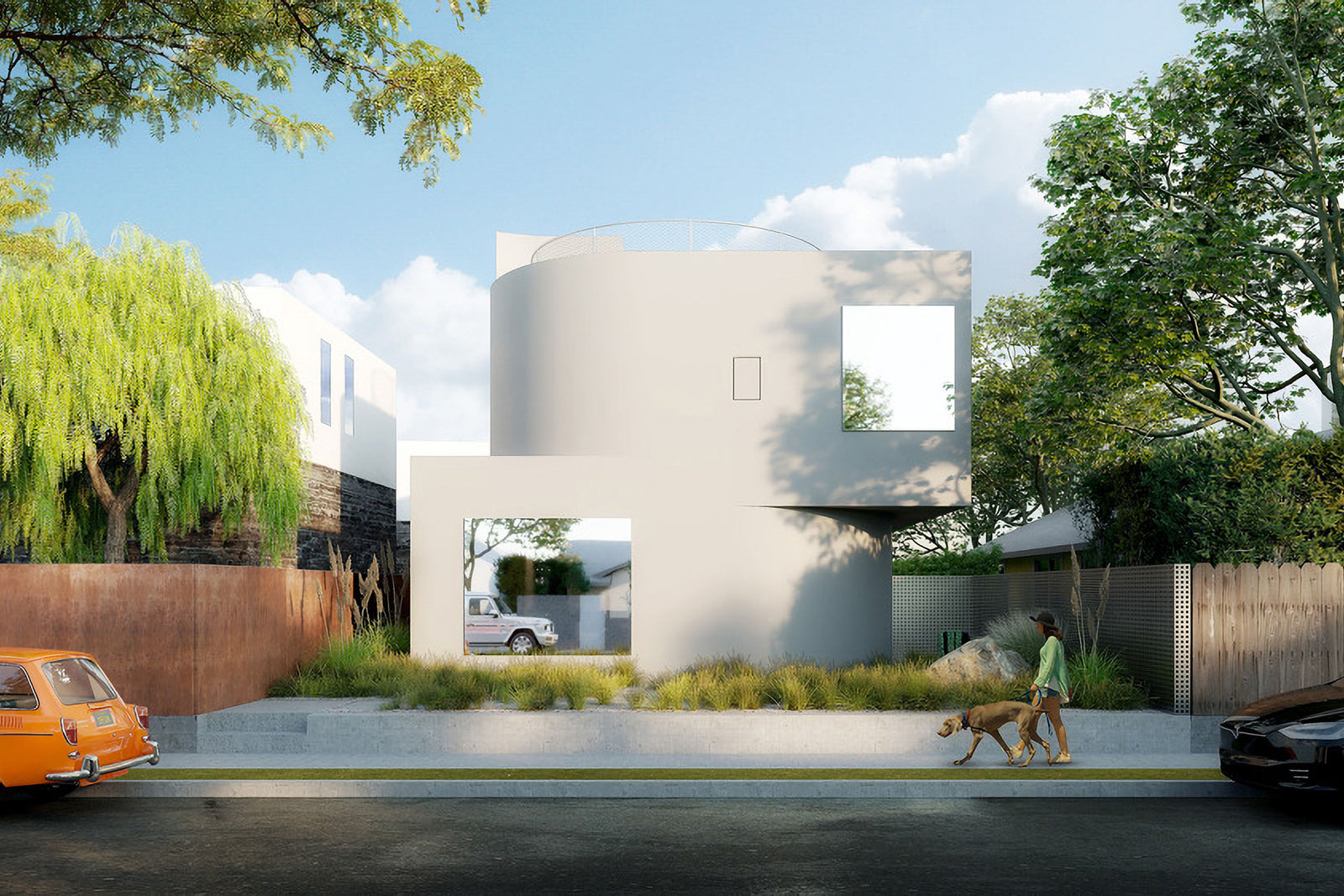Your Cart is Empty
- Decor
- Kitchen
- Tabletop & Bar
- Lifestyle
- Inspiration

Hawk and Mesa is a lonely home in southern California's Mojave Desert near Joshua Tree National Park. Architecture by Jeremy Levine Design with 1,200 ft² (112 m²).

Inspired by the adjacent Pioneertown's Old West architecture and the huge desert environment with its mesas, extinct volcanos, and low sloping mountains. The end product is a contemporary steel home with a huge, slanted shed roof that echoes the mountains and recycled timber typical of desert barns and cabins. This house may be rented for a short period of time at www.hawkandmesa.com.


The ideal location and orientation for the house were carefully considered. It was built on reasonably level soil to prevent grading, which would have harmed the ecosystem. The design had three goals: to collect natural breezes, to frame the amazing vistas so that each room has a little different one, and to position the home to minimize solar heat absorption. As a result of being immediately in the path of canyon winds, the house is cooled by the flow of wind into every room via several sliding-glass doors.


The goal was to build gently on the soil, especially as the location is in an area designated for special Resource Conservation Protection. A biologist examination was required to verify that no desert tortoises or owls will be harmed by the building. The house's structure is constructed using a zero-waste system to minimize disruption to the desert's sensitive environment; the light steel columns and beams were made off-site, then welded together during construction in a matter of days rather than months. This exposed steel frame system was also influenced by modest metal buildings on neighboring horse farms.


The roof overhangs offer a covered wrap-around deck the size of the home for indoor/outdoor living, with places for cooking, dining, and relaxing outside. A stairwell leads to a hot spa and a chilly cowboy tub, an homage to the Old West habit of repurposing galvanized cattle troughs as bathtubs. The house has polished concrete flooring, spotless white walls, and exposed metal ducts on the inside. Large-paned windows frame desert views and let in plenty of light. The kitchen occupies one wall of the open-concept living area, which is flanked on either side by a bedroom and bathroom.


To allow wind to passively ventilate the home, the primary living space is maintained free of walls and other obstructions. This area of the desert receives harsh weather conditions due to its elevation of 4,800 feet. As a result, the materials and features chosen were important to the building's functioning. Unlike wood, steel for the frame does not expand and compress considerably as the temperature changes. Reclaimed timber has a low moisture content and is more durable than new lumber, which expands and compresses under high heat and cold. To improve the weather resilience of the wood, a transparent sealer was applied.


The furnishings contribute to the Old West-meets-modern motif. A camel leather sofa and ottoman, as well as rustic wood coffee and dining tables, are featured in the living room. The outdoor furniture is composed of wood and has black upholstered cushions. The "jackrabbit" fire table was created by Jeremy Levine Design and is inspired by local wildlife. It is fashioned from leftover home-construction materials. The primary bath represents a synthesis of sustainability, cowboys, and modernity. Its vanity is made of salvaged wood, a nod to the distressed-wood bars and tables seen in local saloons. The Cowboy Modern Desert Eco-Retreat is a haven for a youthful family and friends, offering wide vistas and an unpolluted night sky.













Photographs by Lance Gerber.



The Radius House is the young firm's first residential project, which was finished in the early weeks of 2022.